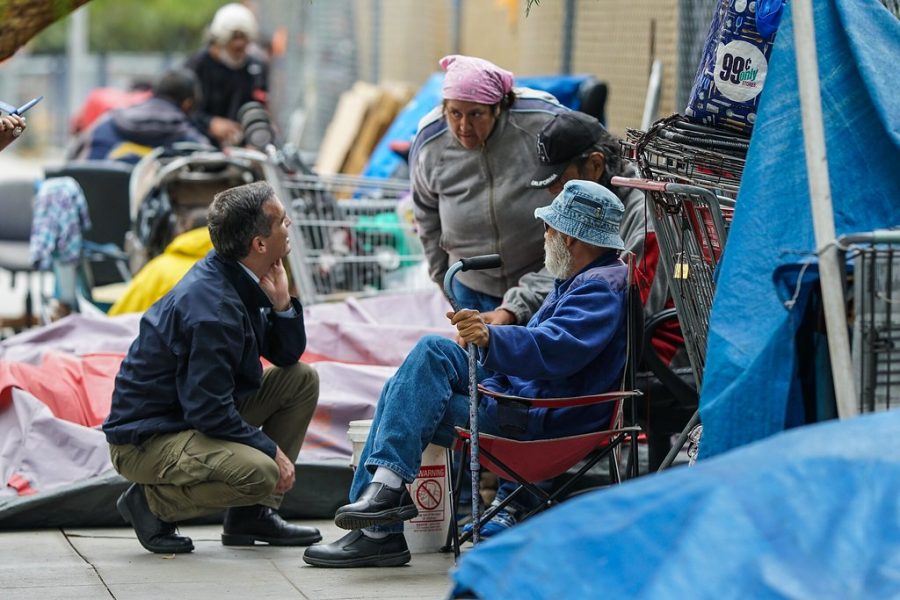LA County Homelessness Issue
December 24, 2021
Anyone who lives in or around the greater Los Angeles (LA) area is likely to acknowledge the growth of homelessness as a problem. In a poll conducted by the Los Angeles Business Council Institute and The Los Angeles Times, results found that 94% of voters viewed homelessness as a serious problem. Though most citizens can agree that homelessness is an issue, other opinions regarding this topic are often divided by racial and ethnic divides.
Through the use of surveys, it was demonstrated that Latino and Black voters were more optimistic about solving homelessness as an issue, despite being the ethnic groups surveyed with the most likelihood of experiencing housing insecurity. Black, Latino, and Asian American voters mostly acknowledged the high costs of housing and ever decreasing wages to be the primary contributor to homelessness while white voters believed it to be a lack of healthcare. Black and Latino voters were also statistically more likely to agree that officials should focus on providing more resources and help for the unhoused rather than clearing encampments.
Though it’s easy to see homelessness through the lens of strictly wealth inequality, the profound racial divides remain evident. In a report by the Los Angeles Homeless Services Authority, it was showcased that while African American residents make up 34% of the unhoused population in LA, they make up for only 8% of LA County’s population. These harsh statistics have caused many people of color in the community to take initiative and help homeless people through various initiatives.
Shirley Raines, founder of Beauty 2 the Streetz, runs a nonprofit which provides hot meals and makeover services to homeless people on Skid Row. Through instilling the population with nutrition and confidence, Raines hopes to make a difference in the way homeless people are regarded and treated in LA.
“When we talk about the population of homeless in skid row and the amount of the homeless that are people of color, you’ve got to understand this: It’s a direct relationship to the lack of opportunity that is there for people in LA,” said Raines.
Despite community efforts, the LA government still focuses on relocating unhoused citizens rather than aiding them. During the COVID-19 pandemic, LA County made an attempt to push homeless people into empty hotel rooms. They outlawed sleeping at parks, libraries, and other locations and continued enforcing this law by clearing large encampments in Venice, Echo Park, and MacArthur Park.
Some citizens in the LA area argue that compassion, not force, is needed to make progress in order to resolve this community issue. As a liaison for the homeless community in the Boyle Heights Neighborhood Council, Brenda Martinez highlights how more sustainable housing options and access to addiction treatment programs can create a huge difference in decreasing the amount of unhoused individuals. She continues to emphasize how gentrification and the subsequent rise in housing prices coupled with lowering wages will only cause larger rates of homelessness in the future.
“This problem is just going to get bigger and bigger,” says Martinez.
To combat this issue, Arcadia residents in local activist groups have worked to begin solving this issue. Groups like Sunrise Arcadia that focus on mutual aid distributions of food, water, and clothing have done great work to increase the resources offered to unhoused individuals in the area. Other city-led projects, like the Tiny House Project, an initiative which plans to build small, emergency shelters for homeless individuals, work to provide a temporary solution when solving the issue of sustainable housing have succeeded in LA County. Cities like North Hollywood, Tarzana, Reseda, and Highland Park have instituted these tiny homes.
Photo courtesy of FLICKR.COM

